The following excerpts are from Thomas Kuhn’s famous book “The Structure of Scientific Revolutions.” Kuhn’s view of science was that science had nothing to do with truth, and that paradigms and worldviews determine what scientists constitute science over all.
“To the extent that… two scientific schools disagree about what is a problem and what is a solution, they will inevitably talk through each other when debating the relative merits of their respective paradigms. In the partially circular arguments that regularly result, each paradigm will be shown to satisfy more or less the criteria that it dictates for itself and to fall short of a few of those dictated by its opponent… [N]o paradigm ever solves all the problems it defines and since no two paradigms leave all the same problems unsolved, paradigm debates always involve the question: Which problems is it more significant to have solved?
Like the issue of competing standards, that question of values can be answered only in terms of criteria that lie outside the normal science altogether, and it is that recourse to external criteria that most obviously makes paradigm debates revolutionary…
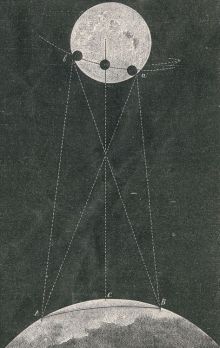 The history of astronomy provides many other examples of paradigm-induced changes in scientific perception, some of them even less equivocal. Can it be conceivably be of an accident, for example, that Western astronomers first saw change in the previously immutable heavens during the half-century after Copernicus’ new paradigm was first proposed? The Chinese, whose cosmological beliefs did not preclude celestial change, had recorded the appearance of many new stars in the heavens at a much earlier date. Also, even without the aid of a telescope, the Chinese had systematically recorded the appearance of sunspots centuries before these were seen by Galileo and his contemporaries…
The history of astronomy provides many other examples of paradigm-induced changes in scientific perception, some of them even less equivocal. Can it be conceivably be of an accident, for example, that Western astronomers first saw change in the previously immutable heavens during the half-century after Copernicus’ new paradigm was first proposed? The Chinese, whose cosmological beliefs did not preclude celestial change, had recorded the appearance of many new stars in the heavens at a much earlier date. Also, even without the aid of a telescope, the Chinese had systematically recorded the appearance of sunspots centuries before these were seen by Galileo and his contemporaries…
What occurs during a scientific revolution is not fully reducible to a reinterpretation of individual and stable data. In the first place, the data are not unequivocally stable. [For example:] A pendulum is not a falling stone, nor is oxygen dephlogisticated air. Consequently, the date that scientists collect from these diverse objects are, as we shall shortly see, themselves different…
Operations and measurements are paradigm determined. Science does not deal in all possible laboratory manipulations. Instead, it selects those relevant to the juxtaposition of a paradigm with the immediate experience that that paradigm has partially determined. As a result, scientists with different paradigms engage in different concrete laboratory manipulations…
Does a field make progress because it is a science, or is it a science because it makes progress?
Doubts about progress [often] rise in the sciences. Through the pre-paradigm period when there is a multiplicity of competing schools, evidence of progress, except within schools, is very hard to find… During periods of revolution when the fundamental tenets of a field are once more at issue, doubts are repeatedly expressed about the very possibility of continued progress if one or another of the opposed paradigm is adopted…
Often a new paradigm emerges, at least in embryo, before a crisis has developed far or been explicitly recognized…A scientific community is an immensely efficient instrument for solving the problems or puzzles that its paradigms define… [but we must ask] What must nature, including man, be like in order that science be possible at all? Why should scientific communities be able to reach a firm consensus unattainable in other fields? Why should consensus endure across one paradigm change after another? And why should paradigm change invariably produce an instrument more perfect in any sense than those known before?…
Any conception of nature compatible with the growth of science by proof is compatible with the evolutionary view of science developed here. Since this view is also compatible with close observation of the scientific life, there are strong arguments for employing it in attempts to solve the host of problems that still remain.”
 Francis Bacon, born in 16th century London, would come to be known as one of the greatest minds to ever walk the earth. Folks would call him the father of empiricism, and credit him with helping to create the scientific method. He is one of the great philosophers whose efforts helped shape the modern world. Many of Bacon’s ideas were hundreds of years ahead of his time.
Francis Bacon, born in 16th century London, would come to be known as one of the greatest minds to ever walk the earth. Folks would call him the father of empiricism, and credit him with helping to create the scientific method. He is one of the great philosophers whose efforts helped shape the modern world. Many of Bacon’s ideas were hundreds of years ahead of his time. In 1995, the US Congress asked two independent scientists to assess whether the $20 million that the government had spent on psychic research had produced anything of value. And the conclusions proved to be somewhat unexpected.
In 1995, the US Congress asked two independent scientists to assess whether the $20 million that the government had spent on psychic research had produced anything of value. And the conclusions proved to be somewhat unexpected.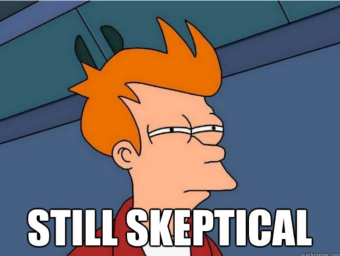 What Professor Wiseman has just admitted in his own words is that, “by the standards of any other area of science that remote viewing is proven”. It literally passes the rigorous tests all other fields of science go through.
What Professor Wiseman has just admitted in his own words is that, “by the standards of any other area of science that remote viewing is proven”. It literally passes the rigorous tests all other fields of science go through. Remote Viewing is not a UFO. We’ve put remote viewing in the lab, and verified that its real with the same methods we verify other phenomena. This psychologist admits this, and by that merit, its a scientifically verifiable reality. No longer “paranormal”- but demonstrably normal and repeatable. Meaning you don’t have to take his or anyone’s word on it.
Remote Viewing is not a UFO. We’ve put remote viewing in the lab, and verified that its real with the same methods we verify other phenomena. This psychologist admits this, and by that merit, its a scientifically verifiable reality. No longer “paranormal”- but demonstrably normal and repeatable. Meaning you don’t have to take his or anyone’s word on it. and 1937. After 1937, experiments in parapsychology were publicly forbidden during Stalin’s time, and their the rationale behind this was that studies in parapsychology were an attempt to undermine communist-materialism. Privately, though, Stalin continued the government research of parapsychology- and with much success.
and 1937. After 1937, experiments in parapsychology were publicly forbidden during Stalin’s time, and their the rationale behind this was that studies in parapsychology were an attempt to undermine communist-materialism. Privately, though, Stalin continued the government research of parapsychology- and with much success. Visiting Soviet psi labs in 1967, Doctor Ryzl says that he was told by a Soviet, “When Suitable means of propaganda are cleverly used, it is possible to mold any man’s conscience so that in the end he may misuse his abilities while remaining convinced that he is serving an honest purpose.” Ryzl continues, “The USSR has the means to keep the results of such research secret from the rest of the world and, as practical applications of these results become possible, there is no doubt that the Soviet Union will do so.” What will ESP be used for? “To make money, and as a weapon,” Ryzl states flatly.
Visiting Soviet psi labs in 1967, Doctor Ryzl says that he was told by a Soviet, “When Suitable means of propaganda are cleverly used, it is possible to mold any man’s conscience so that in the end he may misuse his abilities while remaining convinced that he is serving an honest purpose.” Ryzl continues, “The USSR has the means to keep the results of such research secret from the rest of the world and, as practical applications of these results become possible, there is no doubt that the Soviet Union will do so.” What will ESP be used for? “To make money, and as a weapon,” Ryzl states flatly.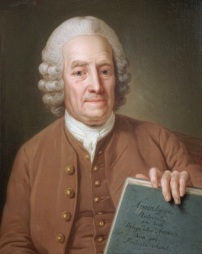 Emanuel Swedenborg was a renowned metallurgist and mystic in the mid eighteenth-century. Among his many scientific accomplishments, Swedenborg displayed an astonishingly modern understanding of brain functioning.
Emanuel Swedenborg was a renowned metallurgist and mystic in the mid eighteenth-century. Among his many scientific accomplishments, Swedenborg displayed an astonishingly modern understanding of brain functioning. that evening, he suddenly announced to his friends that he was having a vision of Stockholm burning, about 300 miles away. Later that evening he told them that the fire stopped three doors from his home.
that evening, he suddenly announced to his friends that he was having a vision of Stockholm burning, about 300 miles away. Later that evening he told them that the fire stopped three doors from his home. “It is at least implicitly understood, everyone accepts the notion that intelligence is not conditioned (and indeed one cannot consistently do otherwise). Consider the example of an attempt to assert that all mans actions are conditional and mechanical… Either it is said that man is basically a product of his hereditary constitution, or else that he is determined entirely by environmental factors.
“It is at least implicitly understood, everyone accepts the notion that intelligence is not conditioned (and indeed one cannot consistently do otherwise). Consider the example of an attempt to assert that all mans actions are conditional and mechanical… Either it is said that man is basically a product of his hereditary constitution, or else that he is determined entirely by environmental factors. Indeed it is necessarily implied, in any statement, that the speaker is capable of talking from intelligent perception, which is in turn capable of a truth that is not merely the result of a mechanism based on meaning or skilled acquired in the past…
Indeed it is necessarily implied, in any statement, that the speaker is capable of talking from intelligent perception, which is in turn capable of a truth that is not merely the result of a mechanism based on meaning or skilled acquired in the past… One may perhaps usefully consider here the image of a radio receiver. When the output of the receiver ‘feeds back’ into the input, the receiver operates on its own, to produce mainly irrelevant and meaningless noise, but when it is sensitive to the signal on the radio wave, its own order of inner movement of electric currents (transformed into sound waves) is parallel to the order in the signal and thus the receiver serves to bring a meaningful order originating beyond the level of its own structure into movements on the level of its own structure. One might then suggest that in intelligent perception, the brain and nervous system respond directly to an order in the universe…“
One may perhaps usefully consider here the image of a radio receiver. When the output of the receiver ‘feeds back’ into the input, the receiver operates on its own, to produce mainly irrelevant and meaningless noise, but when it is sensitive to the signal on the radio wave, its own order of inner movement of electric currents (transformed into sound waves) is parallel to the order in the signal and thus the receiver serves to bring a meaningful order originating beyond the level of its own structure into movements on the level of its own structure. One might then suggest that in intelligent perception, the brain and nervous system respond directly to an order in the universe…“ But Wright did not want to die. He had heard about an exciting new drug called Krebiozen, and he begged his doctor to let him try it. At first his doctor refused because the drug was only being tried on people with a life expectancy of at least three months. But Wright was so unrelenting in his entreaties, his doctor finally gave in. he Gave Wright an injection of Krebiozen on Friday, but in his heart of hearts he did not expect Wright to last the weekend. Then the doctor went home.
But Wright did not want to die. He had heard about an exciting new drug called Krebiozen, and he begged his doctor to let him try it. At first his doctor refused because the drug was only being tried on people with a life expectancy of at least three months. But Wright was so unrelenting in his entreaties, his doctor finally gave in. he Gave Wright an injection of Krebiozen on Friday, but in his heart of hearts he did not expect Wright to last the weekend. Then the doctor went home. Again the results were dramatic. Tumor masses melted, chest fluid vanished, and Wright was quickly back on his feet and feeling great. He remained symptom-free for another two months, but then the American Medical Association announced that a nationwide study of Krebiozen had found the drug worthless in treatment of cancer. His cancer blossomed anew and he died two days later.
Again the results were dramatic. Tumor masses melted, chest fluid vanished, and Wright was quickly back on his feet and feeling great. He remained symptom-free for another two months, but then the American Medical Association announced that a nationwide study of Krebiozen had found the drug worthless in treatment of cancer. His cancer blossomed anew and he died two days later.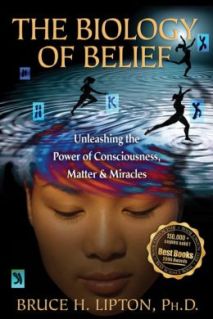 Buried in exceptional cases are the roots of a more powerful understanding of the nature of life – “more powerful” because the principles behind these exceptions trump established “truths.” The fact is that harnessing the power of your mind can be more effective than the drugs you have been programmed to believe you need. The research I discussed in the last chapter found that energy is a more efficient means of affecting matter than chemicals.
Buried in exceptional cases are the roots of a more powerful understanding of the nature of life – “more powerful” because the principles behind these exceptions trump established “truths.” The fact is that harnessing the power of your mind can be more effective than the drugs you have been programmed to believe you need. The research I discussed in the last chapter found that energy is a more efficient means of affecting matter than chemicals. The man survived and Science, reflecting the unanimity of opinion of Germ Theory, had the audacity to say his criticism was incorrect? If it is claimed that this bacterium is the cause of cholera, and the man demonstrates that he is unaffected by germs… how can he be “incorrect”? Instead of trying to figure out how the man avoided the dreaded disease, scientists blithely dismiss this and other embarrassing “messy” exceptions that spoil their theories. Remember the “dogma” that genes control biology? Here is another example in which scientists, bent on establishing the validity of their truth, ignore pesky exceptions. The problem is that there cannot be exceptions to a theory; exceptions simply mean that the theory is not fully correct.
The man survived and Science, reflecting the unanimity of opinion of Germ Theory, had the audacity to say his criticism was incorrect? If it is claimed that this bacterium is the cause of cholera, and the man demonstrates that he is unaffected by germs… how can he be “incorrect”? Instead of trying to figure out how the man avoided the dreaded disease, scientists blithely dismiss this and other embarrassing “messy” exceptions that spoil their theories. Remember the “dogma” that genes control biology? Here is another example in which scientists, bent on establishing the validity of their truth, ignore pesky exceptions. The problem is that there cannot be exceptions to a theory; exceptions simply mean that the theory is not fully correct.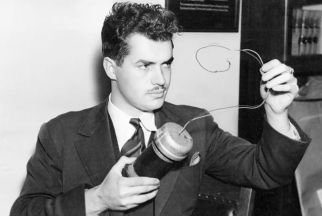 There is more to the practice of Paganism and the development of science and technology than a lot of historians would not go into detail about. The occult means “that which is hidden,” so it doesn’t get talked about much unless you bring up cults or the paranormal.
There is more to the practice of Paganism and the development of science and technology than a lot of historians would not go into detail about. The occult means “that which is hidden,” so it doesn’t get talked about much unless you bring up cults or the paranormal.
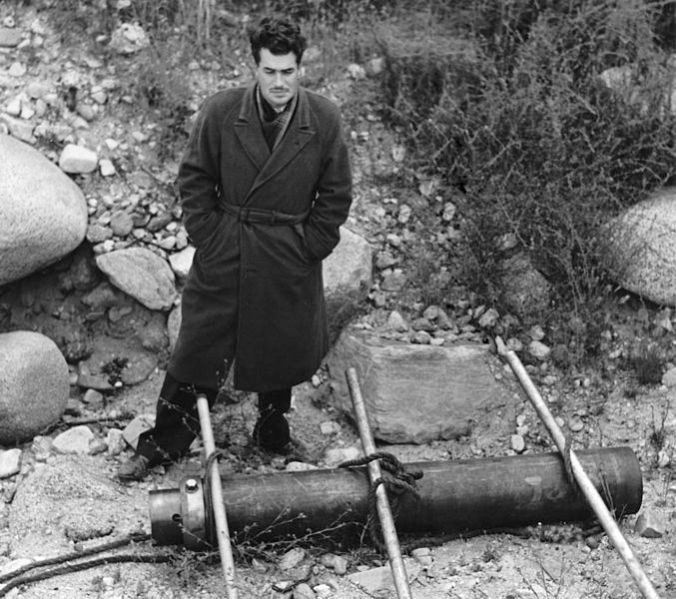
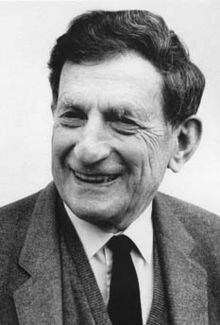 David Bohm was one of the most well respected scientists of the 20th century. He attended at the California institute of technology and UC Berkely. His Doctorate advisor was Robert Oppenheimer. Bohm was also a protege of Einstein’s, working as his assistant at Princeton University. He was one of the forerunners and pioneers of quantum theory in the mid-twentieth century.
David Bohm was one of the most well respected scientists of the 20th century. He attended at the California institute of technology and UC Berkely. His Doctorate advisor was Robert Oppenheimer. Bohm was also a protege of Einstein’s, working as his assistant at Princeton University. He was one of the forerunners and pioneers of quantum theory in the mid-twentieth century. The implicate order to Bohm, in layman’s terms, is all the basic rules of reality that actually exist on a single plain. All events that we know of are tied to this plain of reality, but we cannot perceive how because it is hidden- or implicit.
The implicate order to Bohm, in layman’s terms, is all the basic rules of reality that actually exist on a single plain. All events that we know of are tied to this plain of reality, but we cannot perceive how because it is hidden- or implicit.  Bohm theorized that the implicate and explicate order interacted with each other as a greater whole- that things that appeared separate in real life were actually connected at a deeper part of reality- in the implicate order. Bohm believed that things could be manifest in reality through the mind, via the brain, which to him was a holographic machine.
Bohm theorized that the implicate and explicate order interacted with each other as a greater whole- that things that appeared separate in real life were actually connected at a deeper part of reality- in the implicate order. Bohm believed that things could be manifest in reality through the mind, via the brain, which to him was a holographic machine.